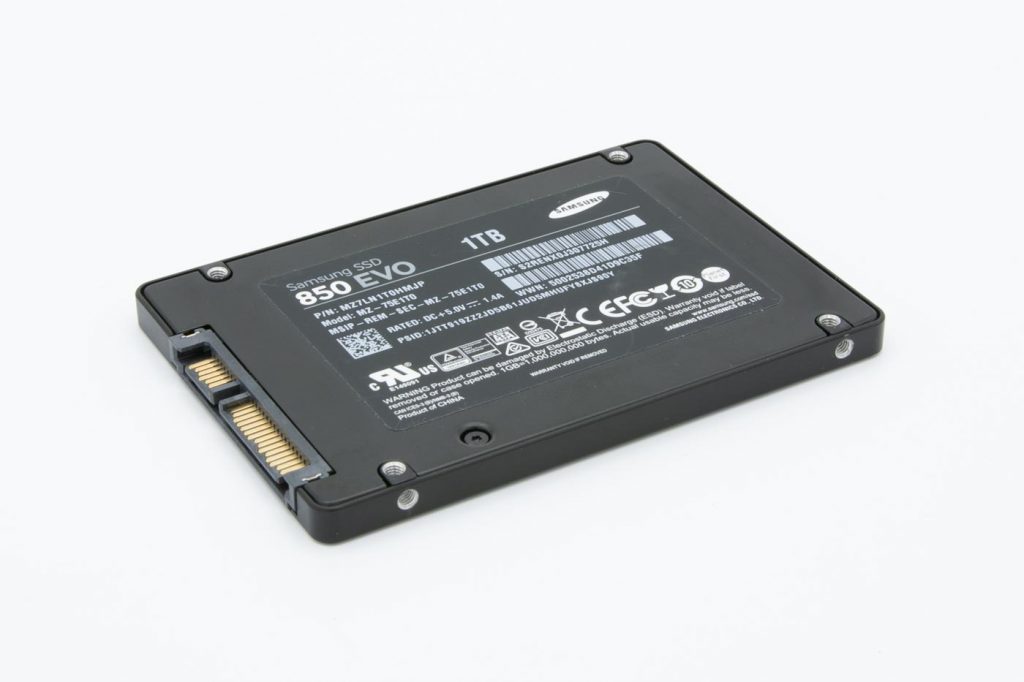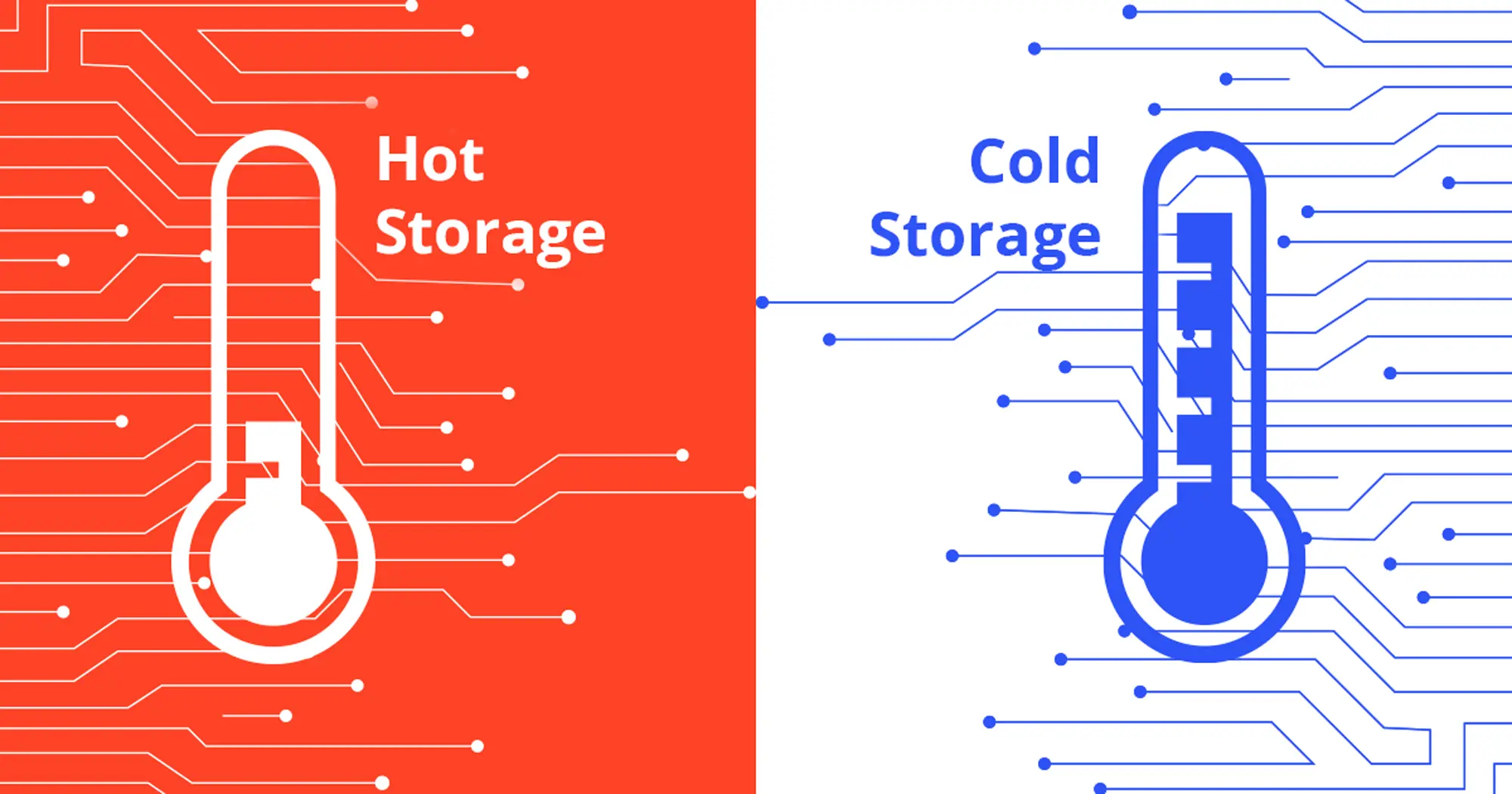Hot and cold storage are data storage methods commonly used in various industries. Hot storage vs cold storage refers to two types of data storage used in computing. This article will explore the fundamental differences between hot and cold storage, outlining their advantages, drawbacks, and ideal use cases.
What is Hot Data Storage
Hot storage is a form of data storage that is constantly connected and easily reachable. It is an online storage system that allows for instant data retrieval. Hot storage typically serves data that experiences frequent access or constant modifications, such as databases, websites, and application servers. Hot storage solutions encompass solid-state drives, flash memory devices, and cloud storage services.
The key feature of hot storage is its fast speed and minimal latency, enabling swift data access and retrieval. This quality makes it well-suited for time-sensitive applications. Additionally, hot storage solutions often include functionalities like data replication and redundancy to ensure uninterrupted data access during hardware failures.
Hot Storage Use Cases
Hot storage is ideal for storing data requiring rapid access and retrieval. It finds widespread application in finance, healthcare, e-commerce, and gaming, where real-time data processing is paramount. Let’s explore some specific use cases of hot storage:
- Transactional Data: Hot storage is ideal for storing transactional data, such as financial transactions or online purchases, that require immediate access.
- Web Applications: Websites and web applications often require fast data access, making hot storage suitable for hosting their databases and content.
- Gaming Industry: The gaming industry utilizes hot storage for storing game data, including user profiles, preferences, and scores, that must be accessed in real-time during gameplay.
What are the Benefits of Hot Storage
Hot Storage offers numerous benefits for data management. One of its primary advantages is swift data access, enabling almost instant retrieval and modification. This speed is crucial for applications reliant on real-time information, significantly enhancing the user experience.
Furthermore, hot storage ensures high availability by replicating and redundantly storing data, guaranteeing uninterrupted access even during system failures or emergencies. This is of the highest importance, especially in industries like healthcare and finance, where reliable data access is paramount.
Versatility is another key advantage of hot storage. It supports various data formats and can accommodate databases, applications, and services of varying sizes and complexities.
Moreover, hot storage often incorporates advanced security features such as data encryption, access controls, and audit logs. These safeguards protect data from unauthorized access and breaches, instilling businesses with confidence and peace of mind.

SSDs are a prime example of hot storage, offering fast data access and retrieval speeds. With no moving parts, they minimize mechanical failures and deliver quick read/write times. Ideal for running operating systems and high-performance applications, SSDs are crucial for efficient hot storage solutions.
What is Cold Data Storage
Cold storage is primarily utilized for long-term data archiving and backup, prioritizing cost-effectiveness over immediate accessibility. Various industries and applications rely on cold storage solutions to meet data management requirements.
Cold storage data refers to infrequently accessed data stored for extended periods, serving as a more affordable alternative to hot storage. Examples include:
- Archived emails.
- Old project files.
- Financial records from previous years.
- Unused video footage.
- Any data necessary for compliance with legal or operational obligations.
Cold Storage Use Cases
Cold storage is a fantastic option for storing large volumes of infrequently accessed data. It has various applications in various sectors, such as government, education, media, and entertainment. Let’s explore some specific instances of how cold storage can be utilized.
- Meeting Compliance Requirements: Many compliance regulations necessitate retaining historical data, and cold storage is an excellent solution for fulfilling these obligations.
- Protecting Against Disasters: Organizations can safeguard their data backups by incorporating cold storage into a comprehensive disaster recovery plan. These backups are easily accessible in the event of system failures or emergencies.
- Preserving Data for the Long Term: Cold storage is especially suitable for keeping data over extended periods. It is ideal for storing critical records or historical information and ensuring long-term integrity.
What are the Benefits of Cold Storage
Cold storage offers numerous advantages, making it suitable for specific applications. Cold storage involves storing data dormant or inactive, providing offline access when needed but not readily available. External hard drives, magnetic tapes, and optical discs are common examples of cold storage solutions.

Firstly, it is cost-effective, as it does not require expensive hardware due to infrequent data access. As a result, it becomes a financially viable choice for storing large amounts of data.
Secondly, cold storage ensures the long-term preservation of data. It is particularly useful for archiving important historical data, records, and digital assets that do not require frequent access. It is especially crucial for organizations that must comply with regulations or reference historical data.
Thirdly, cold storage enhances data security by minimizing vulnerability to cyber attacks. Since the network does not constantly connect to the data, it safeguards against data breaches.
Lastly, cold storage is energy-efficient. Unlike hot storage, which requires continuous power for data access, cold storage devices can be powered down when not in use, resulting in energy conservation and reduced operational costs.
Hot vs Cold Storage - Which is the Right Choice
Hot and cold storage play vital roles in data management, with each type offering unique features suited for various use cases. Understanding their differences is crucial for implementing an effective data storage strategy. Let’s examine these distinctions to understand which storage type works with specific data requirements.
| Feature | Hot Storage | Cold Storage |
|---|---|---|
| Data Access Speed | Enables rapid data access for instant retrieval and modification. | Slower data retrieval due to offline storage, not ideal for real-time data processing. |
| Use Cases | Ideal for instant data access in web apps, gaming, and real-time data processing. | Perfect for storing large volumes of rarely accessed data, ensuring compliance, disaster-proofing, and preserving data for the long term.. |
| Cost | May require a high-performance infrastructure and result in increased expenses. | Cost-effective and economically feasible, as it doesn't require expensive hardware for infrequent data access and can store large amounts of data. |
| Data Availability | Ensures uninterrupted access by replicating and redundantly storing data, ensuring high availability even during system failures. | Data isn't always readily accessible and may require manual intervention for retrieval. |
| Security | Includes advanced security features: data encryption, access controls, and audit logs. | Improves data security by minimizing vulnerability to cyber attacks through offline storage. |
| Energy Efficiency | Requires continuous power for data access. | Can be powered down when not in use, saving energy and reducing operational costs. |
Hot and cold storage play vital roles in data management, with each type offering unique features suited for various use cases. Understanding their differences is crucial for implementing an effective data storage strategy. Let’s examine these distinctions to understand which storage type works with specific data requirements.
In contrast, cold storage recovery may require more time due to the offline nature of the storage, which might involve manual intervention for data retrieval. An expert service provider, such as PITS Global Data Recovery Services, can be a valuable partner in these situations. We provide data recovery solutions for hot and cold storage, preventing permanent data loss.
Our expertise in data recovery from different storage media and our understanding of various data loss scenarios make us a reliable choice. With advanced technology and an experienced team, we specialize in recovering data from multiple storage devices like SSDs, Hard drives and flash drives.
Frequently Asked Questions
What is the contrast between hot storage and cold storage?
Hot storage and cold storage serve different purposes. Hot storage is designed for quick access to real-time data, whereas cold storage is used to store large volumes of data that are accessed infrequently. Another important distinction is cost: hot storage relies on high-performance infrastructure, making it more expensive, whereas cold storage is more cost-effective.
Why is cold storage better?
Cold storage is better for long-term data preservation and cost efficiency. Organizations can store large volumes of data at a lower cost than hot storage, which requires expensive hardware for frequent data retrieval. Cold storage enhances security by reducing vulnerability to cyber attacks through offline data storage.
Is it necessary to have both hot and cold storage?
It depends on the type of data and use cases for your organization. Hot storage is essential for organizations that require quick access to real-time data. On the other hand, cold storage is necessary for preserving large amounts of infrequently accessed data or complying with regulations. In most cases, a combination of hot and cold storage will optimize resource utilization and ensure efficient data management.
Is cold storage more secure?
Cold storage is generally considered more secure than hot storage due to its offline nature. As the data is not consistently linked to a network, its susceptibility to cyber attacks is reduced. Additionally, cold storage devices often have advanced security features such as encryption and access controls.
Which is the best storage for cold data?
There is no one-size-fits-all answer to this question, as the best storage for cold data will vary depending on an organization’s specific needs and use cases. Some popular options include tape-based storage, cloud-based cold storage solutions, and hybrid systems combining local and cloud storage. It is important to carefully evaluate each option’s features, requirements, and costs before deciding.
